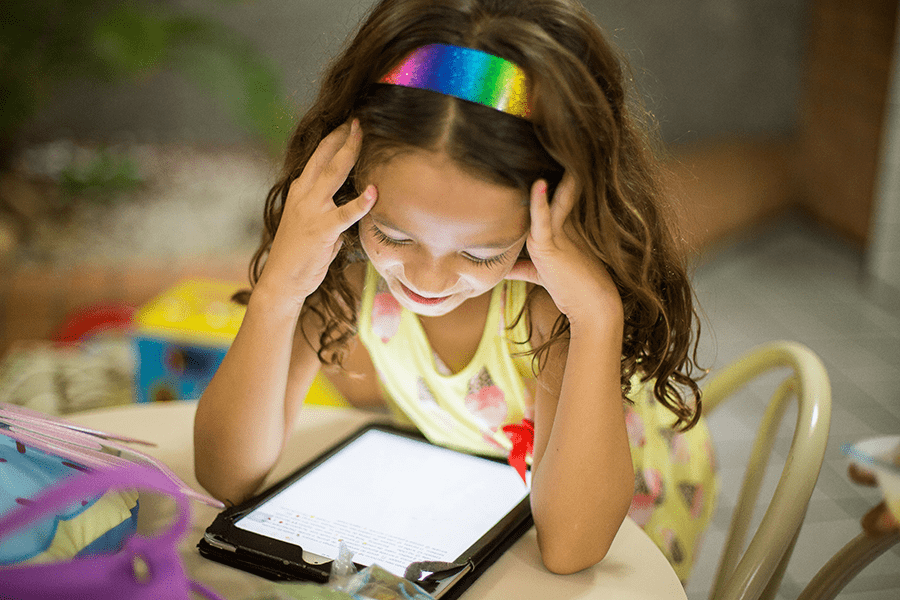When the COVID-19 pandemic forced the transition of K-12 instruction from physical classrooms into remote settings, teachers got a crash course in virtual teaching. The transition was anything but easy, but teachers—and students, families, and administrators—persevered.
And for some teachers, one upside of this new instructional environment was learning valuable strategies about how to incorporate edtech in ways they never had before. Managing virtual learning and reaching out to students without the benefit of in-person classrooms also provided important lessons in how to better support their students going forward, whether remotely or in-person.
Lightspeed Systems® had the opportunity to meet with Lauren Speiser, a National Board Certified kindergarten teacher with a master’s degree in Educational Technology, to learn how she successfully overcame the challenges of remote teaching and implemented new technologies within her virtual classroom.
Below, Lauren shares tips for the successful implementation of new technologies in the virtual classroom and what lessons from online learning can be applied to classroom teaching, as well.
Build the foundation of your classroom’s edtech on accessible, familiar tools and technology
Having reliable resources at the ready makes the transition to online learning more manageable and less stressful for students, families, and teachers. The first, and one of the biggest, challenges we faced in transitioning to virtual learning was making sure that every student had a device for learning. We were not 1:1 when the pandemic caused our school to close, but we did have some devices at our school and a lot of edtech resources that students and teachers were already familiar with and had used in previous years.
We ordered Chromebooks but got stuck in line behind every other district needing to purchase devices. So, we asked students to use their own devices from home (iPads, phones, and laptops), until we could get our new devices up and running. Once we had enough devices, every student from Pre-K to Grade 12 received a Chromebook.
One benefit of teaching kindergarteners virtually is that they have little frame of reference for what school “should” look like. Even given the difficulties of helping young children navigate technology, there is also a degree of adaptability that works in your favor. During our virtual year, my students were quick to pick up concepts like muting and unmuting themselves. That adaptability, combined with a foundation of the standard kindergarten curriculum and practices from in-person teaching, helped my students have a very successful year in class.
Involve families as much as possible
One other challenge that I had as a teacher during our virtual year was regularly getting in touch with families. During a typical school year, when you see students every day, you can send a note home or catch the parent during pick-up time at the end of the day. This was not an option for most of 2020. For one reason or another, many families were unable to answer their phones or check their email. We know that families struggled to get their children online each day during the pandemic, and as a teacher, you start to worry about your students. As the year went on, and with some dedicated effort on the part of teachers and administrators, communication between families and the school improved. It needs to continue to be a top priority moving forward.
In the end, our virtual school year may have resulted in even more communication and familiarity with families than we would have had during an in-person year. With many parents, grandparents, and siblings also at home (not to mention pets!), my students and I were able to get a personal look into each other’s lives in a unique and very special way. Families also got a glimpse of their kindergartener’s school day in a way that would have been impossible before. I know that this connectedness is worth seeking out and cultivating in the future, whether my class is virtual or in-person.
Don’t overwhelm students—or yourself—by using too many new online tools at once
As a kindergartener, learning how to do school online can be overwhelming and challenging. But by the end of the year, my students could navigate to various web pages and complete their independent work without needing help, which gave me more time to work with students individually on curriculum and content. The key was finding the right edtech tools and using them in a smart, conscientious way, rather than throwing a lot of different tools at students and hoping one of them stuck.
For a classroom to be enriching and well-balanced, every student needs to follow along and be interested in the content. This can be a challenge in online learning, especially with kindergarteners who want and need to move around, and who can be easily distracted. I incorporated a few different edtech resources during virtual learning but found that with Lightspeed Classroom Management™, I was able to help each student with their technology and academic needs just as effectively as I would have been able to in a physical classroom.
Lightspeed Classroom Management
It can be tricky to figure out exactly what “glitch” or “error” is happening during virtual schooling, especially with younger students who are just learning how to use a computer. Lightspeed Classroom Management allowed me to help my students select the correct tab, access links, and troubleshoot errors.
Lightspeed also provided features that a lot of other online resources were lacking. With it, I found myself only needing to use four or five different online resources all year, instead of the nine or ten that I may have needed without it. I loved that I could create groups and share links with specific groups, not just the whole class at once. I could also see if all my students were on the correct webpage or if they were on other sites. I was easily able to see what screen my students were on and help them navigate our class activity.
The “share link” feature made it easy to send a link to students instead of requiring extra clicks for them to get into the chat box and access our classwork link.
Be prepared for a return to virtual or hybrid learning
One of my yearly personal goals is to help my students learn independence. That looked very different during a year of virtual learning. During the height of the pandemic, I felt terrible that I could not be physically next to my students to assist as I usually would in the classroom. My students prevailed through the challenges of online learning, though, and had become independent learners by the end of the school year.
The best thing we can do for ourselves, as teachers and for our students, is to be prepared to switch to some degree of online learning in the future—whether that means a hybrid model, a long-term shift like we saw with the pandemic, or some other scenario. Teachers have done so much work learning about virtual schooling and adopting new tools into the classroom, and we need to make sure that time and hard work doesn’t go to waste.
I plan to continue to use the Classroom Management and the “share link” feature in my in-person kindergarten classroom. With the edtech resources I have, I feel confident in my teaching and the growth that my students will make this year and into the future.
Lightspeed also provided features that a lot of other online resources were lacking. With it, I found myself only needing to use four or five different online resources all year, instead of the nine or ten that I may have needed without it. I loved that I could create groups and share links with specific groups, not just the whole class at once. I could also see if all my students were on the correct webpage or if they were on other sites. I was easily able to see what screen my students were on and help them navigate our class activity. The “share link” feature made it easy to send a link to students instead of requiring extra clicks for them to get into the chat box and access our classwork link.
Want to hear more from Lauren?
Watch the on-demand webinar, 1:1 Post-Pandemic, Now What? on-demand.

